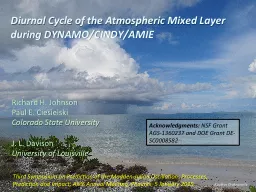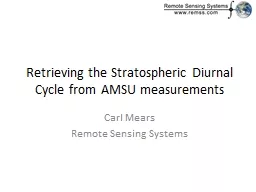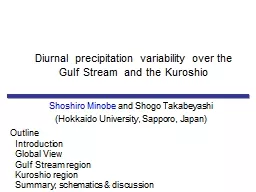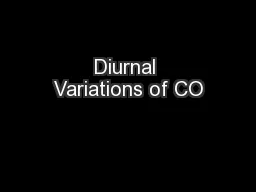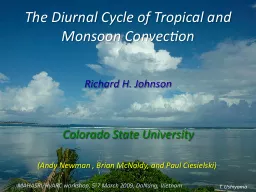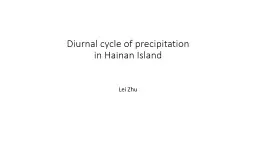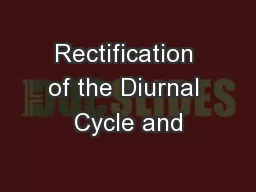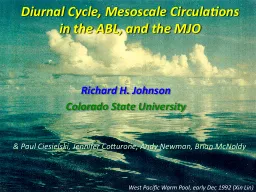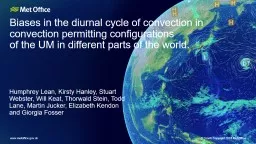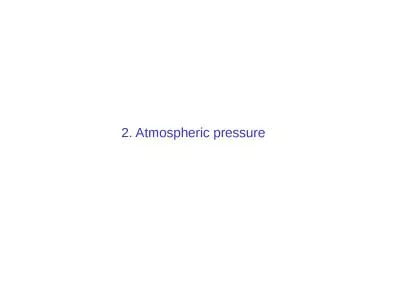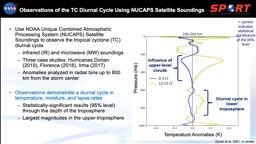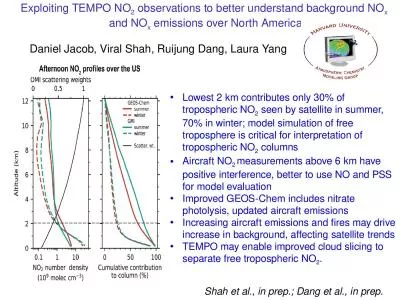PPT-Diurnal Cycle of the Atmospheric Mixed Layer during DYNAMO/
Author : pasty-toler | Published Date : 2017-06-18
Kaustav Chakravarty Richard H Johnson Paul E Ciesielski Colorado State University J L Davison University of Louisville Third Symposium on Prediction of the MaddenJulian
Presentation Embed Code
Download Presentation
Download Presentation The PPT/PDF document "Diurnal Cycle of the Atmospheric Mixed L..." is the property of its rightful owner. Permission is granted to download and print the materials on this website for personal, non-commercial use only, and to display it on your personal computer provided you do not modify the materials and that you retain all copyright notices contained in the materials. By downloading content from our website, you accept the terms of this agreement.
Diurnal Cycle of the Atmospheric Mixed Layer during DYNAMO/: Transcript
Download Rules Of Document
"Diurnal Cycle of the Atmospheric Mixed Layer during DYNAMO/"The content belongs to its owner. You may download and print it for personal use, without modification, and keep all copyright notices. By downloading, you agree to these terms.
Related Documents

